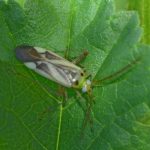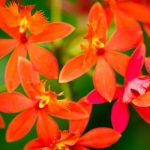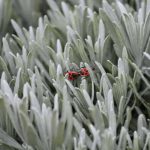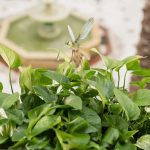Pest infestation on your plant can be quite saddening and frustrating. Your once healthy plant can be a shadow of itself within weeks!
The hibiscus plant is a great way to add that tropical flair to either your home or garden. Hibiscus also makes excellent indoor and outdoor plants depending on the weather.
Sadly, white bugs are one of those insect pests that can damage your hibiscus – and in this article, we’re going to teach you how to get rid of white bugs on hibiscus.
Unfortunately, there is no single proven way of completely getting rid of these pests. However, spraying your hibiscus plant with water and the use of sticky notes can reduce the infestation of white bugs on your hibiscus.
Table of Contents
What are White Bugs?
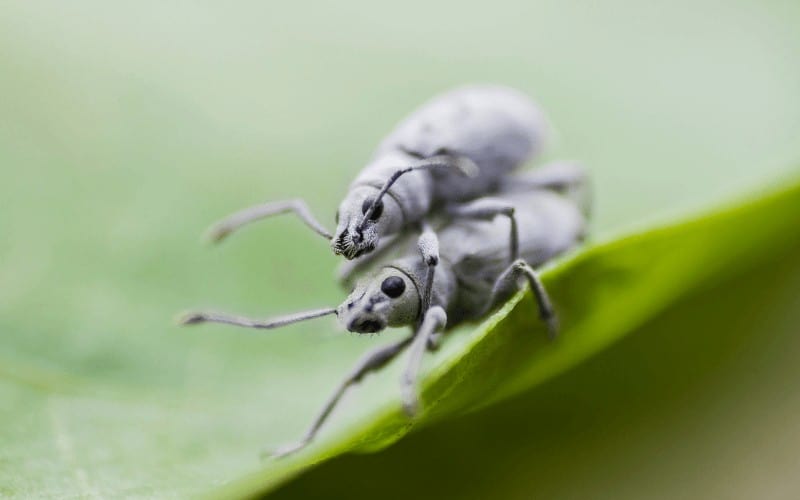
As the name suggests, white bugs are light-colored insects. They have the biological name “Aeleyrodicus dugesii.”
They are usually found on the underside of leaves, where it sucks out the plant’s sap which will eventually lead to the plant’s death if they are not gotten rid of.
Whiteflies can also reduce or affect the photosynthesis of plants by secreting sugary solution that causes the growth of sooty mold on the leaves of the plant. Hibiscus seems to be notorious for attracting whiteflies.
Symptoms and Damages of White Bugs on Hibiscus
Managing white bugs infestation on your hibiscus can be pretty tricky because you might not notice the infestation until your plant is completely damaged.
This is because white bugs slowly suck out the sap from your plant leaves until nothing is remaining.
Most often, the only way to know that your hibiscus is harboring these pests is when you see them flying around when the leaves are disturbed.
As a plant owner, you will need to be more observant to notice if your hibiscus plant is infested with white bugs.
How To Get Rid of White Bugs on Hibiscus
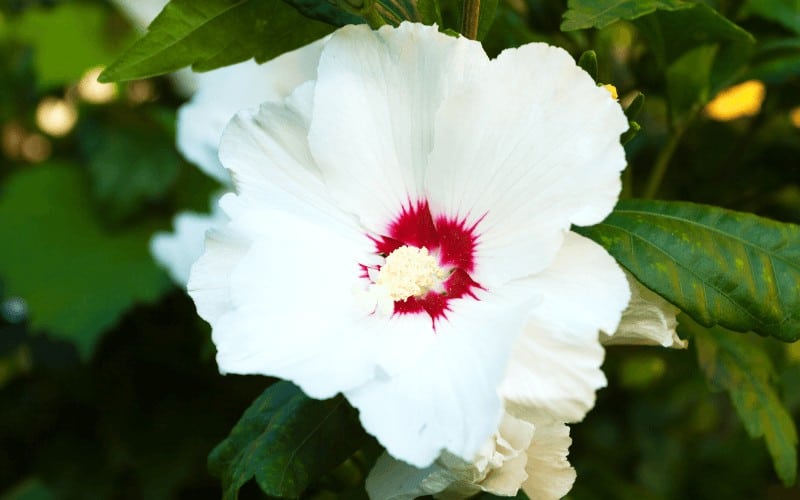
As mentioned earlier, there is no single and proven way of getting rid of these bugs. Whiteflies are difficult to get rid of, but with a combination of the method discussed below, it’s entirely possible to eliminate the stubborn pests.
1. Get Rid of The Infested Leaves
This is one easy way to get rids of the pest, but it might not be as effective. As you know, white bugs attach themselves to the leaves of plants sucking out the sap.
This will result in the leaves being a bit speckled. To manage this, you can simply pluck out the infected leaves and dispose of them.
2. Use A Garden Hose to Wash the Underside of The Leaves
This method becomes necessary when the white bug infestation has spread to all the leaves of your hibiscus plant.
At this point, it’s impossible to pluck out the entire leaves. Instead, use a garden hose to wash the underside of the leaves to remove the whiteflies and their eggs weekly.
3. Use Beneficial Insects
Beneficial insects like ladybugs, syrphid fly larvae, assassin bugs, green lacewings, and parasitic miniature wasps are known for getting rids of parasitic bugs.
These insects can be gotten in your gardening shop. Release them into your hibiscus plant and wait for the result.
4. Make Use of Bright-Colored Sticky Cards
Another way to eradicate white bugs is by ensnaring them with colorful sticky cards. These cards can be purchased in most gardening shops.
Get either yellow or blue sticky cards and place them very close to your hibiscus plant. The colorful card will attract the whiteflies, which fly into the cards and get stuck.
Change the cards when they are smothered with goo-trapped bugs. Be careful when handling these cards; you don't want them getting stuck on your favorite shirt.
5. Spray Your Plant with Horticultural Oil
Horticultural oil can be used to reduce the infestation of white bugs on your hibiscus plant. Horticultural oil can be gotten from almost every gardening store.
Horticultural oil may not completely eliminate whiteflies but can keep their numbers low enough to tolerate.
6. Use Insecticidal Soap
Insecticidal soaps work well against white bugs. You can easily make these soap with household ingredients.
Simply add a tablespoon of any liquid dish soap to water, and mix gently. For easy application, pour the solution into a spray bottle.
7. When All Fails, Use Chemical Pesticide
The use of pesticides should be your last resort when all the methods here fail. Toxic chemicals can eradicate beneficial insects, thus making the pest problem much worse in the long run.
It’s recommended that you spray pesticides at temperatures below 80 degrees when drought is not stressing the plants.
How To Prevent White Bugs Infestation on Your Hibiscus
The saying prevention is better than cure is entirely accurate when it comes to gardening. You can take specific steps to ensure that the white fly’s infestation is not a problem you ever have to deal with.
Healthy plants are less vulnerable to harmful pests; thus, keep your hibiscus plant adequately watered and fertilized. In addition, the area around your plant should be free of plant debris.
When pests or diseases completely damage leaves, pluck them out. Prune hibiscus regularly to provide sunlight and air circulation to the center of the plant.
Frequently Asked Questions
What Can I Spray on My Hibiscus for Bugs?
Use a garden hose to wash the underside of the leaves to remove bugs. Use of insecticide is not exactly advised since it might eradicate beneficial insects that are useful to your plants. You can also spray your hibiscus with horticultural oil.
What Are Tiny White Bugs on Hibiscus?
These could be either aphids or white bugs. Aphids usually come in white, black, or green color, while white bugs are light-colored. White bugs attach themselves to the leaves while aphids gather on the flower stems and buds.
Conclusion
It is unfortunate to witness your plants under attack from pests. However, the methods discussed in this post should effectively get rid of white bugs on hibiscus plants.
Remember, there is no single and proven way to get rid of white bugs on hibiscus. However, you can combine the methods discussed in this post until white bugs are entirely eradicated.
Spraying your hibiscus plant with pesticides should be your last resort when other methods have failed.
You may also like:
- Will Vinegar Kill Aphids on Hibiscus?
- How To Get Rid Of Spider Mites On Hibiscus
- What Bugs Does Citronella Keep Away?
- Bugs That Look Like Cockroaches But Aren’t
- How to Get Rid of Bugs in Garden Soil
- How Do I Protect My Tomato Plants From Bugs?

